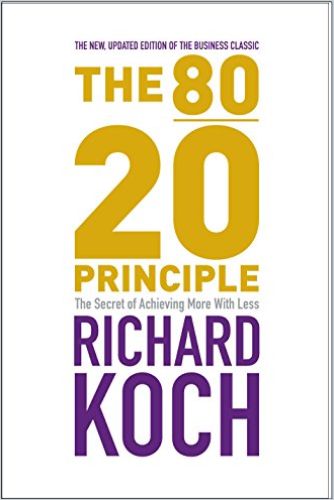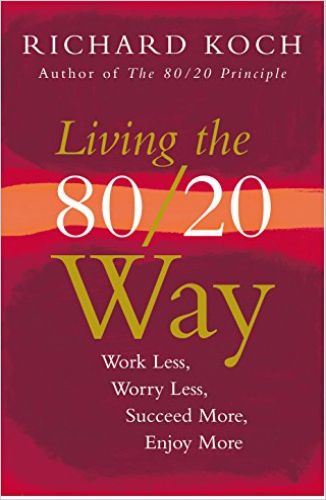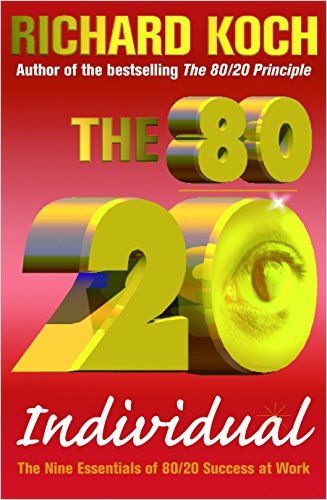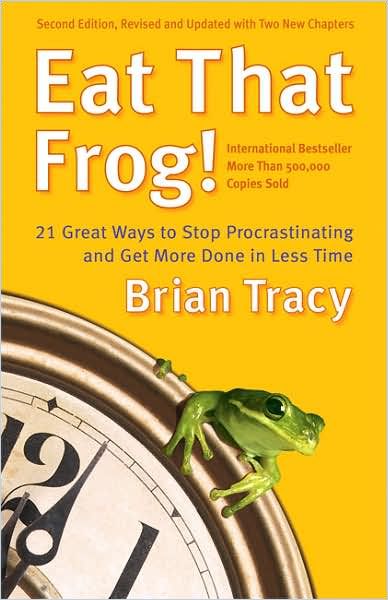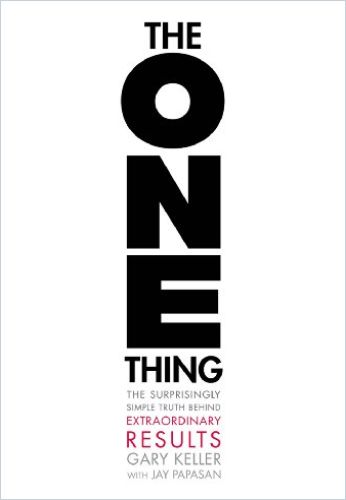The 80/20 Principle, Or: Less Is More

In the early 20th century, economic philosopher Vilfredo Pareto uncovered a powerful secret hidden in economic statistics: Cause and effect are not in balance. A minority of causes – usually around 20% – produces 80% of results.
The pattern he discerned, now known as “the Pareto Law,” occurs in every area of business: For instance:
- 20% of products rack up around 80% of total sales.
- 20% of customers account for 80% of revenue.
- 20% of salespeople bring in 80% of a firm’s business.
The 80/20 Principle proves pervasive outside of business, as well:
- 20% of drivers are responsible for 80% of car accidents.
- 20% of criminals commit 80% of crimes.
- 20% of a plant contains 80% of the fruit.
1. How It Applies to Your Life
The 80/20 Principle applies to many areas of your business and personal life. Use it to improve your company’s performance, boost your personal effectiveness and increase your happiness.
Time Management
Imagine you have a to-do list with 10 items. According to the Pareto Principle, two of those items will generate 80% of the return you’ll get from your entire list. Now, when you look at your list, you will be tempted to clear up a few small things first. Your first instinct tells you to check off the easy tasks to feel accomplished. However, those items may not be significant in moving you closer to your most important goals. And that’s a problem. Effective people discipline themselves to address the most important task first, always. They avoid scattering their attention and energy among too many things.
The things that matter most must never be at the mercy of the things that matter least.
Johann Wolfgang von Goethe
The 80-20 Principle teaches you to work smarter, not harder. Most time management books are based on some variation of the Pareto Principle and offer different implementation methods. Here are a few examples:
Happiness
If you’re unhappy, chances are you are engaging in too many activities that don’t actually bring you joy. As psychologist Sonja Lyubomirsky explains, happiness is a habit (provided you are not clinically depressed). Happiness involves actively choosing to regularly engage in activities that make you feel happy. In her book, The How of Happiness, Lyubomirsky offers a menu of twelve activities that research has shown will lift your moods. She recommends that you select the ones that appeal to you most and turn them into habits. Evaluate how you spent the past few months and identify the 20% of people and activities that produced at least 80% of your best emotional moments. Make those 20% your number one priority.
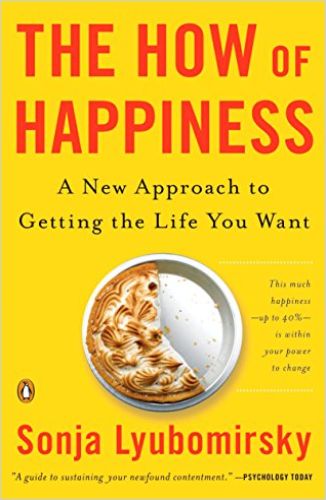
Quality Control
Dr. Joseph M. Juran, who pioneered many quality management techniques still in use today, partly based his approach on the – you guessed it – 80/20 Principle. In his 1951 volume, The Quality Control Handbook, Juran observed that several root causes lead to a large majority of wastage due to defects. Thus, if you want to help your organization to dramatically improve product quality, identify the core issues that are causing the problems – and make remedying them your number one priority.
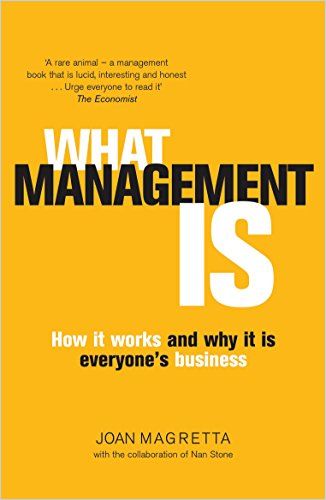
Sales
If you’re in sales, you’ve probably heard that 80% of your sales come from 20% of your clients. Here’s a new version of that rule: 80% of your sales result from 20% of your activities. The real secret to climbing into the top 10% of your profession is simple: Determine which of your activities are linked with actual sales revenue. Weed out the irrelevancies, focus on results, and you will be on your way to becoming a sales superstar.
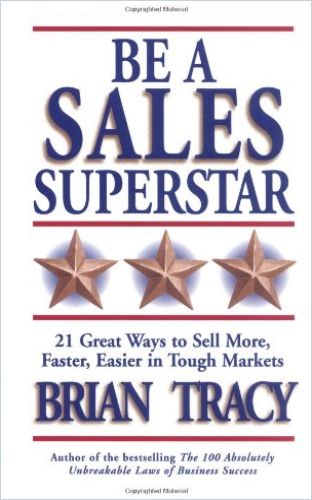
2. The Exceptions That Prove (Or Don’t) The Rule
A potential pitfall of applying the 80/20 Principle is ignoring or misinterpreting the role of the remaining 80%. Here are two examples:
Sales
Author Chris Anderson argues that online selling has created new economic realities that somewhat change the 80/20 Principle to successful selling. Certainly, the maxim that only a handful of blockbuster products will make up 80% of your sales continues to hold true. Yet great profits can still be made selling the other 80%, thanks to what Anderson refers to as “long-tail markets.” The “Long Tail” – the extensive, sustained reach of smaller, low-volume specialized products online – is now wagging the big dog of blockbuster hits in news, music, literature and film.
A few things sell a lot and a lot of things sell a little.
Chris Anderson
The long tail consists of the “hidden majority:” the vast assortment of books, films, recordings and other items that don’t become popular hits. Long-tail merchandise includes many quality products that big retailers that carry only the best-selling products bypass as they balance expensive inventory and finite space.
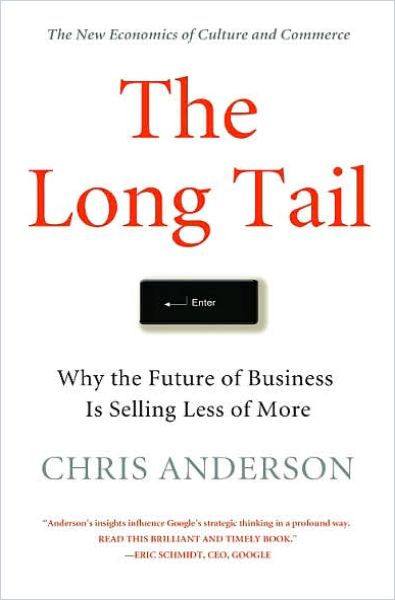
Endurance Sports
If you are a runner and want to get faster, your coach will tell you that just a few high-intensity runs per week will lead to most of your performance gains. Marathon legend Paula Radcliffe, for example, followed an 80/20 Rule by running only 3 of her 15 weekly training runs at high intensity.
The training concept, however, does not mean that the remaining 80% you run at a lower intensity are unimportant or unnecessary. Quite the opposite: they help you build the necessary stamina that makes the performance-boosting 20% possible.
3. Making 80/20 Work or You
The Pareto Principle often gets misconstrued as meaning that you only need to do 80% of the work needed. But when you strive for excellence, you need all 100%. It may be true that Leonardo da Vinci painted 80% of the Mona Lisa in the first 20% of the time he spent on it, but it wouldn’t be the masterpiece it is without all the details added afterward.
In what aspects of your life is 80% not good enough?
Start by applying the 80/20 to your life in its entirety. Look at all life aspects: career, family, friendships, personal development, spirituality, health and fitness, etc. Identify the 20% of your life most important to you – and strive for 100% in these areas. You can then apply the 80/20 rule to the remaining 80% of all the activities you pursue.
The Pareto Principle should not stand in the way of pursuing excellence. Rather, it helps you work and live smarter so that you can focus your energy on the 20% of your life where “good enough” is not enough.
